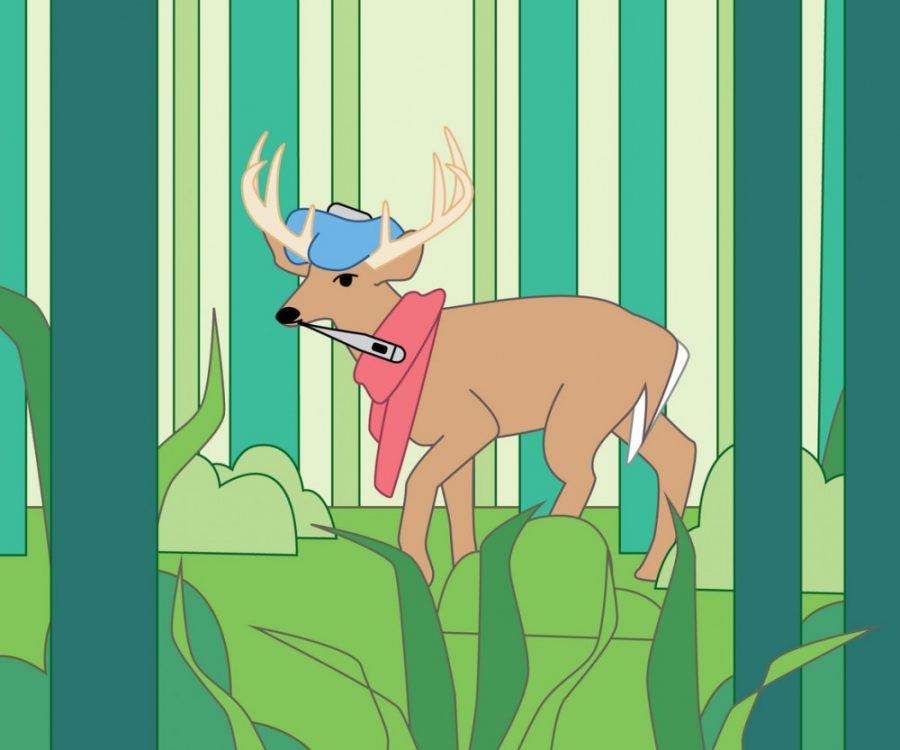Hunting season is in full swing in Minnesota. This fall and winter, as Minnesotans go out into the wild as hunters, they can also act as scientists and participate in wildlife health research. This collaboration between hunting and conservation can help preserve the sport for generations to come and keep our natural resources healthy.
Hunters have supported land and wildlife conservation for a long time. More than 100 years ago, hunters were a primary driving force in establishing the North American Model of Wildlife Conservation, which lays out seven principles to inform policies and laws to “restore and safeguard fish and wildlife and their habitats through sound science and active management,” according to the Association of Fish and Wildlife Agencies website.
It may sound counterintuitive to some that hunters would be such staunch advocates of conservation policies, but hunters learned long ago what the effects of hunting without restrictions would be. The early 1900’s saw the near extinction of several wildlife species – partly due to this imbalance between hunting and conservation – which led hunters to support policies that implemented population and land management.
For example, the Federal Migratory Bird Hunting and Conservation Stamp (usually referred to as the “Duck Stamp”) was created in 1934 after prompting from waterfowl hunters to protect wetlands vital to migratory waterfowl, according to the Department of the Interior. Since that first stamp, sales have raised more than $950 million, helping to protect or restore nearly 6 million acres of habitat for birds and other wildlife.
Firearm and ammunition sales also contribute to wildlife management efforts. Through the Pittman-Robertson Act, gun owners have contributed more than $14 billion to conservation since 1937. These payments to state fish and wildlife agencies have resulted in the recovery of both game and nongame species, which benefits hunters and non-hunters alike.
All of this is to say nothing of charitable contributions from hunters to conservation organizations.The 10 largest non-profit conservation organizations provide $2.5 billion to conservation efforts annually; 12.3 percent of this, or about $307 million per year, comes from hunters. This is on top of what hunters already pay in licensing and fees.
Hunters can do a lot more than just pay for wildlife and land management efforts. They can also get involved in sample collection for scientific research supporting conservation. While hunting and science may initially seem unrelated, this practice aligns with the seventh tenet of the North American Model of Wildlife Management: “Scientific management is the proper means for wildlife conservation.”
The Minnesota Department of Natural Resources (DNR) manages several wildlife infectious disease tracking studies in animals including deer and ducks, both of which are popular game animals this time of year.
Michelle Carstensen, Wildlife Health Program supervisor at the DNR, provided insight on these studies to me over email. She and her colleagues study Chronic Wasting Disease (CWD) in deer and moose, Highly Pathogenic Avian Influenza (HPAI) in waterfowl and other birds and even COVID-19 in deer and humans.
The studies go beyond infectious disease and into contaminants that may be in the environments these animals live in. Carstensen said the DNR is working on neonics, a class of synthetic insecticides, in deer and prairie chickens, and deer exposure to Per- and Polyfluoroalkyl Substances (or PFAS). According to the Environmental Protection Agency (EPA), PFAS are “widely used, long lasting chemicals, components of which break down very slowly over time.”
Carstensen said the sample collection process varies by animal and study type, but efforts are made to ensure that it is as convenient to hunters as possible to ensure higher rates of participation.
For example, Carstensen said with duck studies, she and colleagues interact with duck hunters at the boat landings when they come off the lake with their harvest of birds. “It’s voluntary and allows us to sample their bird, and they usually are just fine with that,” she said.
She noted with some other studies it can be difficult to get hunter participation in sample collection due to controversy surrounding the disease in question. CWD has garnered some controversy in recent years, with disputes over the source of the disease and how to treat it going forward.
Carstensen said hunters can certainly be of help with wildlife disease and contaminant studies. She cautioned that hunters need to be careful to not spread diseased material between areas, but they can be very helpful with sample collection as a group covering wide areas and several species.
Awareness, choosing to include research sample contribution and careful handling of harvested animals appear to be key factors in hunters participating in wildlife management science in a meaningful way.
As a hunter and a scientist myself, participating in research sample collection and submission is a no-brainer if I manage to hunt successfully this year.
Hunters can get involved by interacting with DNR officials at hunting sites as well as seeking out what studies are going on and picking up sample kits ahead of time. Information is available on the DNR website, and CWD mail-in testing kits and self-serve sampling sites are available. Plan ahead, participate and protect our wildlife.
Would you like Allison to follow up on this topic or explore something specific? Contact her at [email protected] with questions, comments or story ideas.





















